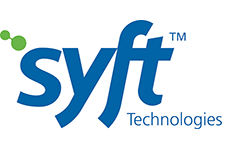Pharmaceutical and food products are susceptible to contamination from packaging volatiles – whether from polymeric materials, printing inks, or paperboard. VOCs can also migrate through multiple layers of packaging, so it is critical to analyze materials regularly.
Traditional approaches utilize static headspace analysis, but it is difficult to relate these results to actual quantities of volatiles in the packaging due to matrix-dependent interactions. The MHE technique circumvents this issue by calculating the total concentration in the product from a limited number of consecutive headspace analyses (Figure 1). Typically six cycles are utilized in complete analysis of one sample, which makes it a very costly technique when coupled with gas chromatography-mass spectrometry (GC-MS). By utilizing rapid SIFT-MS measurement instead, headspace regeneration becomes the rate-limiting step and multiple samples can be analyzed in parallel.









